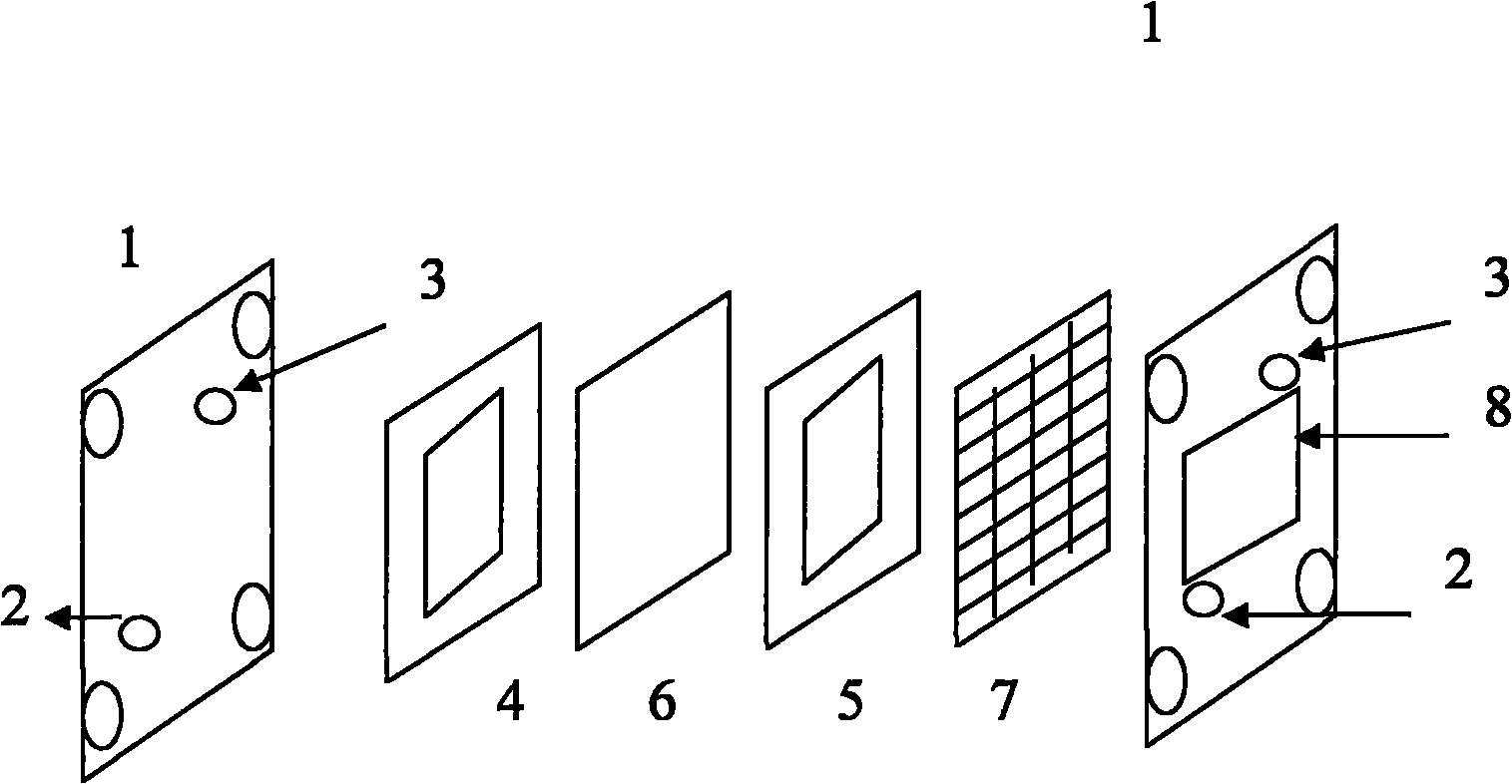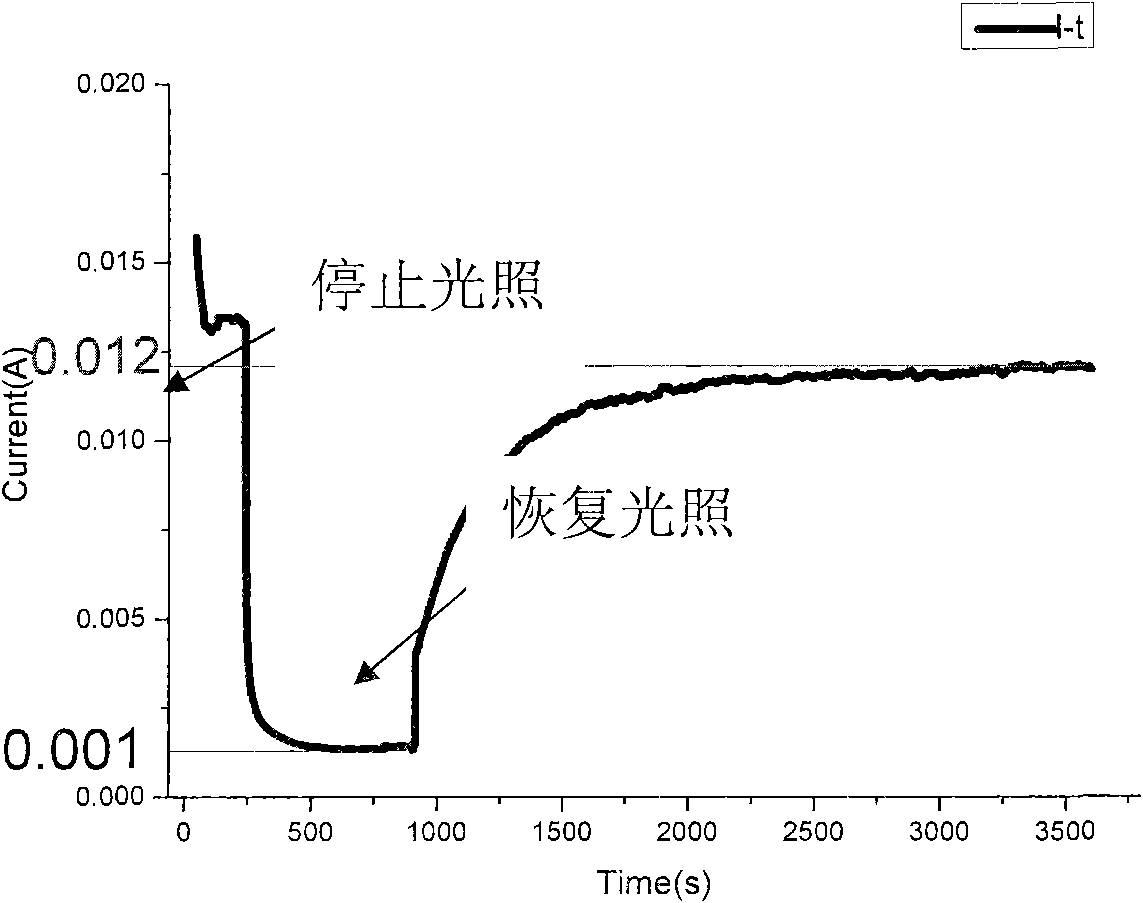Device for decomposing water to produce hydrogen based on optical electrolytic bath
A technology of photoelectrolysis and hydrogen production from water, which is applied in electrolysis process, electrolysis components, light water/sewage treatment, etc. It can solve the problem of high power consumption, reduce ohmic impedance loss, save post-processing steps, and avoid corrosion.
- Summary
- Abstract
- Description
- Claims
- Application Information
AI Technical Summary
Problems solved by technology
Method used
Image
Examples
specific Embodiment approach
[0048] Its specific implementation is as follows:
[0049] 1) use figure 1 The photoelectrolytic cell was assembled in the middle structure and placed on the test platform, with 1M KOH solution passing through both sides, and allowed to stabilize at room temperature for 30 minutes.
[0050] 2) After 30 minutes, the polarization curve test will be carried out between 0-2V. After the test is completed, turn on the light source and stabilize it for 5 minutes, and test the polarization curve under the condition of external light.
[0051] figure 2 is the relationship curve between the current and the applied voltage of the assembled photoelectrolytic cell at room temperature. Depend on figure 2 It can be seen from the results that a weak current can appear in the photoelectrolytic cell at a voltage of 1v under the condition of external light. With the gradual increase of the applied voltage, the current increases, and the influence of light becomes more prominent with the in...
Embodiment 2
[0054] image 3 It is the current-time relationship curve of the photoelectrolytic cell at room temperature and an applied voltage of 1.23V.
[0055] From image 3 It can be seen from the results that under a constant applied voltage, the current value can reach 12mA when there is an applied light, and it remains stable. When the light is suddenly stopped, the current value drops sharply, and after stabilization, it is about 1mA, and gradually tends to be stable. When the light is restored again, the current value rises rapidly and gradually increases to a stable value. The system runs continuously for 2 hours, and the current value has no attenuation, which proves that the performance of the self-designed photoelectrolyte cell is relatively stable.
[0056] Figure 4 It is the chromatographic analysis image of the gas produced by the cathode of the photoelectrolytic cell under steady operation.
[0057] Depend on Figure 4 From the correlation results, it can be seen tha...
PUM
 Login to View More
Login to View More Abstract
Description
Claims
Application Information
 Login to View More
Login to View More - R&D
- Intellectual Property
- Life Sciences
- Materials
- Tech Scout
- Unparalleled Data Quality
- Higher Quality Content
- 60% Fewer Hallucinations
Browse by: Latest US Patents, China's latest patents, Technical Efficacy Thesaurus, Application Domain, Technology Topic, Popular Technical Reports.
© 2025 PatSnap. All rights reserved.Legal|Privacy policy|Modern Slavery Act Transparency Statement|Sitemap|About US| Contact US: help@patsnap.com



